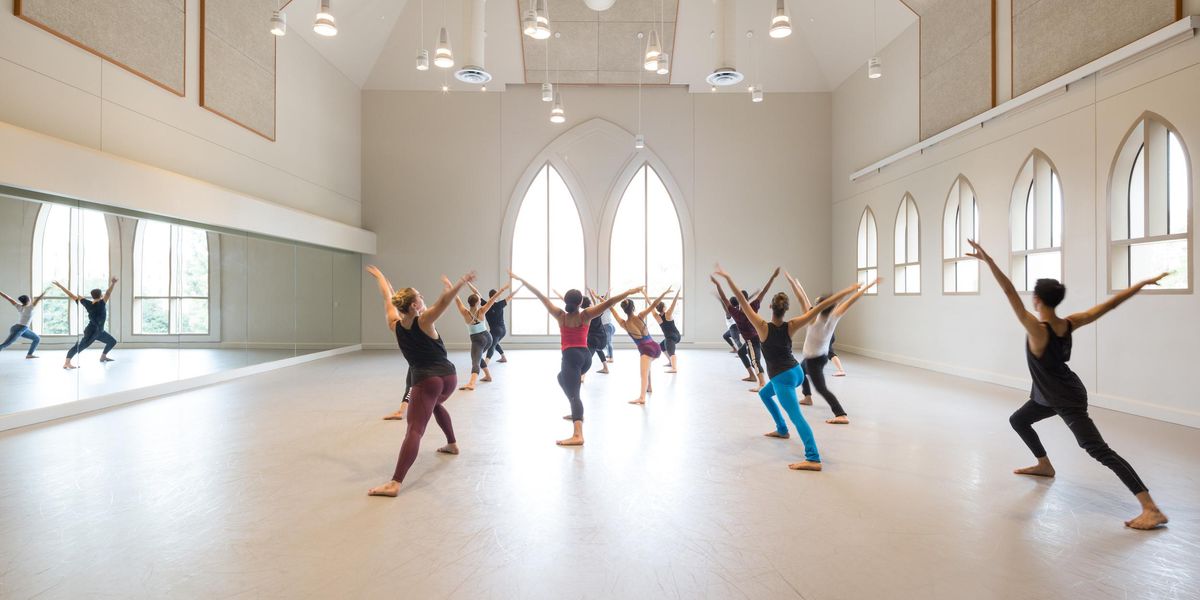New York City Dance Alliance's summer intensive pushes dancers beyond their comfort zone
When you’re heading into your final training years, there’s a lot of pressure to decide what kind of career you want and perfect that technique, be it Balanchine, Horton or hip hop. So dancers often opt for summer programs with a narrow focus. Sometimes, it pushes them to new heights; other times, it creates a one-note training bubble.
New York City Dance Alliance takes a different approach to summer intensive study. At its two-week program during July and August in New York City, dancers study everything from ballet to tap to voice. While it offers strong training for students who want to become triple threats, it also gives them time to explore less familiar styles. “We want the dancers to have a safe place to work outside their comfort zone,” says NYCDA managing director Leah Brandon, “to discover areas of the dance world that they may not know exist or didn’t see themselves in.”
The intensive’s list of teachers echoes this idea. Last year’s staff included regular NYCDA faculty members, plus guests like Ailey II artistic director Troy Powell, Ballet Next artistic director Michele Wiles, Nederlands Dans Theater’s Jon Bond and Luis Salgado from On Your Feet!
Amanda Mitchell, a junior at Pace University’s dance program has attended the intensive four times, and still returns as an assistant. “I’ve done a lot of different programs, but NYCDA’s is so versatile,” she says. “After my first summer, going back to my studio, people were like, ‘What did you do? What changed?’ The program really sparks something new inside of you.”
Experimenting Across Levels
Most dancers who attend the program are selected at one of NYCDA’s regional conventions, though you can also submit a video online. Instead of traditional levels, the students are randomly divided into groups of about 25 which changed throughout the intensive. The theory is that all the students have strengths in different styles, and can learn from each other. “You’re dancing with people of all ages from all over the country,” says Mitchell. “And everyone has something different that they’re good at. It pushes you to be better.”
The schedule for each day varies, and the dancers don’t know what they’re in for until the night before or that morning. Usually, the day begins with either ballet, jazz or modern, followed by classical or contemporary partnering, or conditioning like Pilates or yoga. After lunch, dancers take styles like musical theater, hip hop, tap and ballroom, among others. There’s also an opportunity to hone triple threat skills through acting and voice classes. Career-oriented workshops like injury prevention, resume building and nutrition are also on the schedule.
In the evening, dancers rehearse for the end-of-program performance. Each dancer is cast in two pieces, choreographed or set by faculty and guests. Weekends are reserved for tourist activities and seeing shows around the city. Last summer, the group saw CATS on Broadway, had a Q&A session with the cast and learned choreography from the show.
The Bigger Picture
One big advantage of the NYCDA program is its close relationship with Pace University, which has one of the country’s first programs dedicated to commercial dance. Classes are held in Pace’s studios, and dancers stay in the dorms and eat at its cafeteria. “It’s like a mini college experience—a trial run,” says Brandon, who brings in reps from NYC-based college dance departments to speak. For Mitchell, the connection helped her get a spot at Pace—and a scholarship.
The intensive’s emphasis on audition prep, through mock auditions with one-on-one feedback, also helped her prepare for professional auditions. “A casting director will sit you down and walk you through your resume,” she says. “You get personal feedback about what they liked about your audition and what they didn’t, down to what you’re wearing.”
The end goal is to get students thinking about what kind of career they’d like to pursue—even if that means going down a totally different path than they thought. “Each kid leaves with a clearer idea of what they want to do and what they need to do to get there,” says Scott Jovovich, who has been teaching ballet and theater dance at NYCDA for 15 years. “I sent my own son to this program, because for me, this is the place to figure out who you want to be.”
The Details
Attendance: 100 students, split into classes of roughly 25
Timeline: Two weeks
Ages: 14 to 18
Housing: Students stay in Pace University dorms




